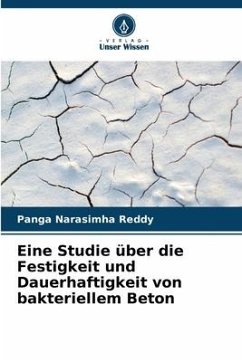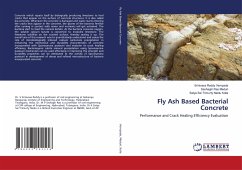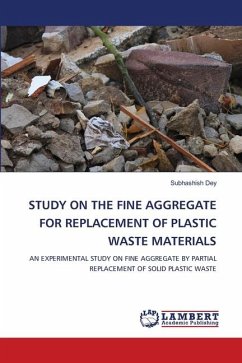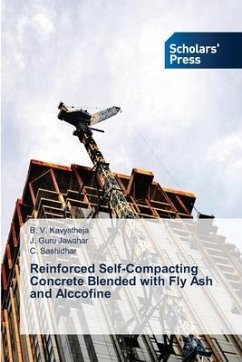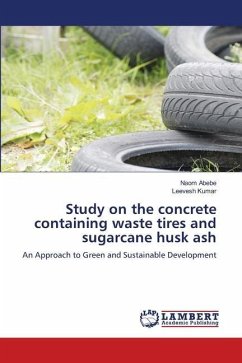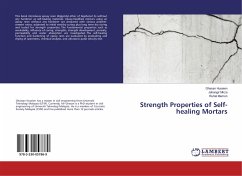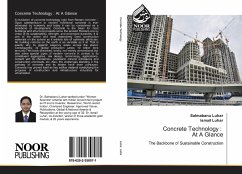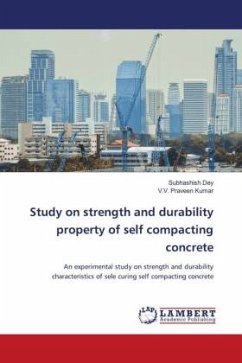
A Study on the Strength and Durability of Bacterial Concrete
Versandkostenfrei!
Versandfertig in 6-10 Tagen
43,99 €
inkl. MwSt.

PAYBACK Punkte
22 °P sammeln!
Concrete is one of the most produced materials in the world. The amount of cement, the binder in concrete, produced in 2017 total of an astounding 4.1 billion tonnes. However, traditional concrete has inherent weaknesses, and despite the durability of concrete, cracking is inevitable. Cracks develop in concrete when it is exposed to conditions such as excessive stress, temperature fluctuation, and corrosive chemicals. Selfhealing concrete is a promising new technology that will change the way structures are maintained. When concrete cracks, the crack allows water and carbon dioxide into the ma...
Concrete is one of the most produced materials in the world. The amount of cement, the binder in concrete, produced in 2017 total of an astounding 4.1 billion tonnes. However, traditional concrete has inherent weaknesses, and despite the durability of concrete, cracking is inevitable. Cracks develop in concrete when it is exposed to conditions such as excessive stress, temperature fluctuation, and corrosive chemicals. Selfhealing concrete is a promising new technology that will change the way structures are maintained. When concrete cracks, the crack allows water and carbon dioxide into the material. In self-healing concrete, these elements would reach bacteria, which then catalyze a reaction inducing a calcite precipitate, healing the concrete, and preventing further damage from occurring and also enhance the strength of the concrete when compared to conventional concrete.



